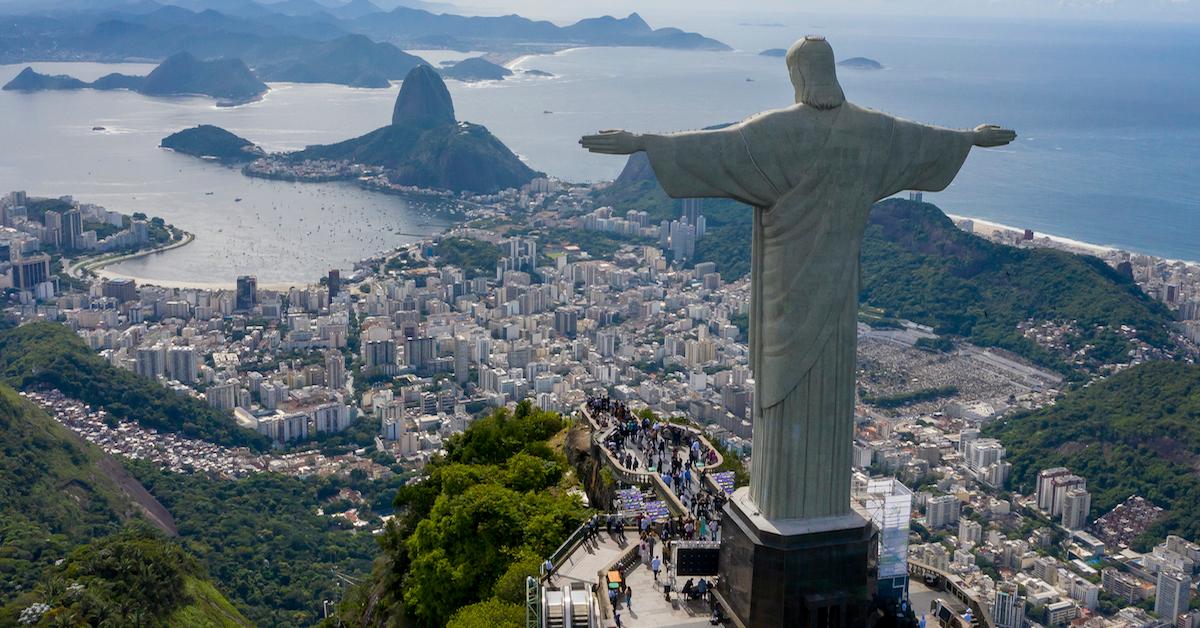How Curitiba, Brazil Became One of the Most Sustainable Cities on Earth
Published March 19 2021, 4:43 p.m. ET

If you were to walk down the street in the city of Curitiba, Brazil, you might notice that it feels different from other cities. With a population of 1.9 million people, Curitiba isn’t Brazil’s largest city, though it is the greenest. The remarkable metropolis has become world-renowned for its creative and environmentally-conscious solutions to urban planning, but how is Curitiba sustainable, and how can other cities profit from its example?

What is Curitiba?
Curitiba wasn’t always destined to be the green city that it is today. According to The Guardian, Curitiba was meant to be like Brasília, Brazil’s capital city. In the 1960s, Brazil's former president wanted to build a new capital city that would represent Brazil, so he chose a city 1,000 miles away, in the middle of the agricultural state of Paraná.
Urban planners began work on rebuilding Curitiba to be a new Brasília, but Jaime Lerner, the former mayor of Curitiba, spoke out and stopped it from happening. It wasn’t until 1972 that Lerner instituted his initial plans to transform Curitiba into a truly sustainable city.
How is Curitiba sustainable?
According to The Borgen Project, Curitiba’s environmentally-friendly solutions run the gamut from reducing pollution through citywide recycling programs, to maintaining biodiversity in the region by planting 1.5 million trees. Curitiba’s waste removal program is so efficient that it is able to recycle 70 percent of all its garbage. That program also enables citizens to exchange their recycling for bus tokens, notebooks, and even food.
Speaking of buses, the city also features a phenomenal rapid transit system with elements that are baked into the buses, ticket prices, and the roads themselves. The buses are custom made and designed for quick boarding, bus ticket prices are uniform for everyone, and the roads are lined with express lanes specifically designed to maintain the efficiency of the system and lower carbon emissions. In addition to the bus lanes, there are bike lanes and pedestrian-only streets all across the city.
Curitiba is big on environmental education, as well, and its Free University of Environment is designed to teach every citizen about the value of sustainability, ecology, and the environment. The school is free for everyone, and its location, right in the middle of Zaninelli's woods, is in line with Curitiba's overall aesthetic. There are additional signs and information panels posted all over the city that explain its inherently green designs.
Curitiba is also sustainable in terms of its botanical spaces. According to The Borgen Project, the city planners have built 28 public parks and surrounded all of the urban areas of the city with fields of grass in order to combat flooding. Those fields are maintained using sheep rather than gas-powered lawnmowers. As a result, the "bio-mowers" offset the use of gasoline and provide manure and wool for the city and surrounding farms.
What makes a city sustainable?
According to The Zebra, a sustainable city is defined as one that addresses not only the environmental concerns of the city but the social and economic ones as well. Cities achieve this by building eco-friendly programs and initiatives into the city infrastructure or by making environmentally-conscious, physical alterations to streets, parks, or buildings themselves.
These are other sustainable cities:
Curitiba isn’t the only sustainable city in the world today. It stands among several in South America including Santiago and São Paulo. According to National Geographic, London, Frankfurt, Copenhagen, Amsterdam, Rotterdam, Berlin, and Madrid represent a handful of Europe’s most sustainable places to live.
In North America, Toronto is at the top, as are many other Canadian cities. San Francisco is the most sustainable in the U.S., while New Delhi, Wuhan, Mumbai, Manila, Seoul, and Jakarta are the best in Asia. Dubai and Abu Dhabi are top in the Middle East.